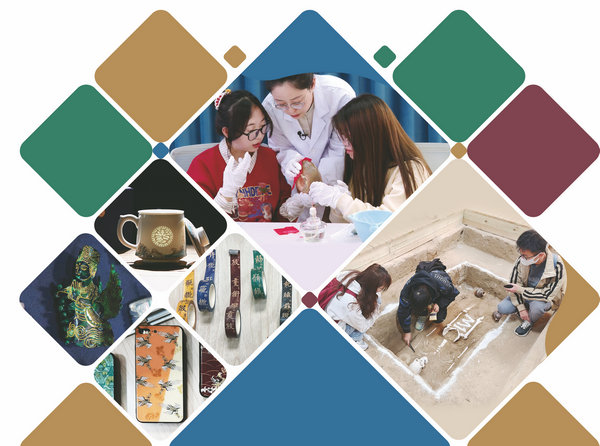Reviving Xixia in the digital age
VR, art, and AI are helping young researchers bring an ancient dynasty back into the spotlight — and into people's daily lives.


When Deng Wentao first began researching the Xixia civilization as a graduate student, he found himself constantly correcting misconceptions.
"There's a common belief that the Tangut people were completely wiped out by the Mongols," said the now 37-year-old lecturer at Ningxia University (NXU). "But the truth is that many survived well into the Yuan Dynasty (1271-1368), which was founded by the Mongols after their conquest of Xixia. They went on to play important roles in its political and cultural life."
Deng is part of a rising generation of scholars working to bring new insights to the once-overlooked Xixia Dynasty (1038-1227), a regime founded by the Tangut people that flourished in Northwest China during the 11th to 13th centuries.
Their work has taken on new significance following the July 11 decision to inscribe the Xixia Imperial Tombs on the UNESCO World Heritage List — a moment that has thrust the ancient dynasty into the global spotlight.
"I hope my research can help dispel myths and offer a more accurate understanding of this historical period," Deng said.
Deng's work builds on the efforts of at least three earlier generations of Chinese scholars who laid the academic foundations of Xixia studies.
"This achievement is unmatched anywhere else in the world," said Du Jianlu, dean of the School of History and Ethnology at NXU.
According to Du, modern Xixia studies began in the early 20th century. In 1908, Russian explorers unearthed a significant collection of Xixia texts and relics at the ruins of Khara-Khoto in the Inner Mongolia autonomous region. These artifacts were later transported to St. Petersburg in Russia.
"Since the 1990s, China's growing international influence and academic exchanges have enabled the publication of facsimile editions of these texts, allowing Chinese scholars direct access to primary sources," Du explained.
Most of these documents are written in the Tangut script and include numerous Buddhist scriptures. Fortunately, researchers uncovered a bilingual Chinese-Tangut glossary among the materials. Together with corresponding Chinese Buddhist texts, this glossary has been vital in decoding the ancient language.
"Tangut characters resemble Chinese in stroke order and structure but tend to be squarer and more compact," Du said.
Some of these documents also record everyday life details — loans, land sales, rental agreements, and taxes. "They offer a valuable glimpse into grassroots society," said Tian Xiaopei, 35, a scholar at NXU. "But interpreting them is difficult due to the cursive script and the damage they have suffered over time."
Despite these challenges, Tian made a significant breakthrough. He identified references to a land property rights system in Xixia records that predate similar systems documented in the mid-Ming Dynasty (1368-1644), pushing the historical timeline back by several centuries.




































